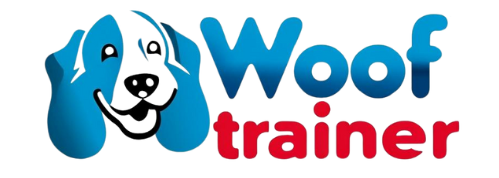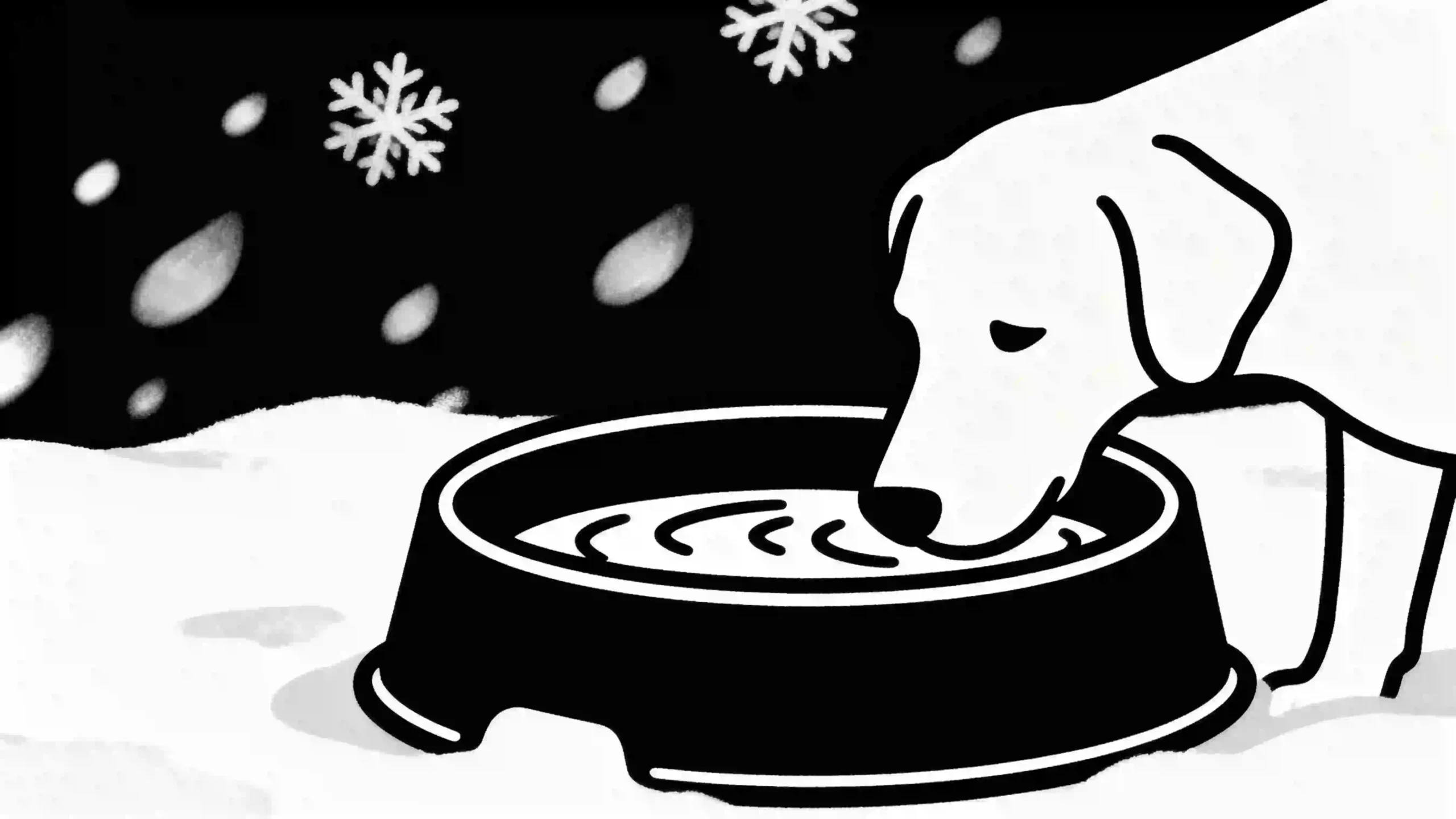When winter weather sweeps in, water bowls quickly go from a source of hydration to blocks of unusable ice. As someone who values your dog’s health and comfort—whether you’re a suburban pet owner, a rural farmer, an outdoor adventurer, or a kennel professional—ensuring a steady supply of fresh, unfrozen water in winter is not just a chore; it’s a crucial responsibility. This ultimate guide to heated dog bowls will equip you with every insight and practical tip you need to protect your pets from the risk of dehydration, eliminate the headache of constantly swapping frozen bowls, and choose a solution that fits your unique circumstances.
Why Winter Hydration Is Critical for Dog Health
Before diving into the mechanics and types of heated pet water dishes, it’s important to understand just how vital hydration is to winter dog care. It’s a misconception that dogs only need more water during hot weather. In reality, winter dehydration is a common threat. According to the American Kennel Club, cold air tends to be extremely dry, and when dogs are exposed to it, they lose more moisture through respiration. Heated indoor environments similarly sap humidity, increasing your pet’s need for water. Even mild dehydration can lead to kidney strain, digestive issues, and a weakened immune response (AKC, 2023).
A reliable, freeze-proof dog bowl addresses the repeated freezing and refilling cycle that risks periods without water, especially dangerous for puppies, seniors, and working dogs who spend hours outdoors.
Understanding Heated Dog Bowls and Their Benefits
A heated dog bowl is engineered to keep water above freezing, even when ambient temperatures plunge well below 32°F (0°C). Using either an integrated electric heating element or solar/battery-powered technology, these bowls are among the most effective hydration & feeding solutions for winter dog care.
Key Benefits:
- Consistent Winter Hydration: Prevents water from freezing, guaranteeing continual access.
- Reduced Maintenance: No more dumping ice, thawing, or replacing bowls multiple times a day.
- Improved Hygiene and Safety: Stainless steel and BPA-free materials resist bacteria and are easy to clean.
- Peace of Mind: Trust that your dog or kennel dogs are safe from dehydration, even if you’re not home.
- Emotional Assurance: You’re providing the highest level of care, comfort, and protection for your pet family.
Types of Heated Dog Bowls and Their Applications
Electric Heated Dog Bowls
The electric dog bowl is the most popular choice, especially for kennel professionals and rural pet owners in extremely cold climates. Simply plug them into a standard outlet and the built-in element keeps water fluid, often down to -20°F or colder. Modern bowls boast energy efficiency and safety certifications.
Example Use Case:
You manage a multi-dog kennel in Minnesota, where overnight temps regularly dive below zero. With electric heated bowls, you can rest assured each dog has liquid water around the clock.
For important operational considerations, read our Safety Tips for Using Electric Heated Dog Bowls Outdoors.
Solar and Battery-Powered Heated Dog Bowls
Where access to electricity is limited—think remote farms, outdoor runs, or traveling with dogs—solar-powered or rechargeable battery bowls shine. The main trade-off is they may have shorter run times or depend on sunlight consistency but are invaluable for portability.
For a deep comparison, check out Solar vs Electric Heated Dog Bowls: Which Works Best for Farms.
Material Matters: Stainless Steel vs. Plastic
When it comes to winter dog care, stainless steel is unmatched for durability, hygiene, and resistance to cracking or absorbing odors. Plastic bowls may be cheaper but are more likely to degrade in freezing temperatures and harbor bacteria.
Meet WoofTrainer Heated Dog Bowl
Tired of constantly swapping out frozen water bowls? Meet the WoofTrainer Heated Dog Bowl—the ultimate solution that puts your pet’s safety first. This isn’t just another electric bowl; it’s a heavy-duty piece of gear built to last. Crafted from premium, food-grade 18/8 stainless steel, it offers unbeatable hygiene and durability. The non-slip silicone gasket base not only keeps things tidy but locks the bowl firmly in place—no more puddles or runaway bowls.
What truly sets the WoofTrainer apart is its industry-leading safety features. Unlike standard bowls, it operates on safe 24V low-voltage power, drastically minimizing electrical shock risk. Stainless steel armor wraps the chew-resistant cord, protecting both the bowl and your pet. And with its smooth, polished rim, every drinking experience is comfortable for your dog. In summary: maximum safety, minimum hassle.
How to Choose the Right Heated Dog Bowl
Consider Your Dog’s Drinking Habits and Habitats
- Single Dogs/Solo Bowls: For suburban pets or small farms, a midsize 1-2 quart bowl is adequate.
- Multiple Dogs/Kennels: Go up in capacity or invest in several bowls to serve groups without constant refill.
- Rural or Remote Farms: Solar or battery bowls may suit pasture runs or where power outlets are few.
Look for Key Features
- Freeze Resistance: Choose a freeze-proof dog bowl rated for your region’s lowest expected temps.
- Material Quality: Stainless steel or BPA-free, food-grade plastic for health and longevity.
- Chew-Proof, Safety-Certified Cords: Especially vital for energetic or teething dogs.
- Stable & Non-Skid Base: Prevent spills that can refreeze, causing slips or wasted water.
- Low-Voltage Operation: Minimizes fire and shock risk—features like the WoofTrainer’s 24V system are industry leaders.
- Ease of Cleaning: Removable or dishwasher-safe bowls speed up your routine and prevent bacteria.
Professional Tip:
If you’re running a busy kennel, review How to Maintain Heated Dog Bowls in Busy Kennels for streamlined cleaning and monitoring protocols.
Practical Use Cases: Matching Bowls to Needs
Suburban Dog Owners
You want reliability, mess prevention, and safety for family pets who may dart outside multiple times a day. An electric heated bowl like the WoofTrainer is both a practical and stylish solution.
Rural Farm Owners
Demand a heavy-duty, freeze-proof dog bowl that can withstand rough outdoor conditions, farm dust, and hard use. Stainless steel with armored cords—alongside Heated Dog Bowls for Farm Dogs: What You Need to Know—are especially recommended.
Kennel Professionals
Multiple large bowls with energy-saving thermostats are essential.
Outdoor Enthusiasts
If you enjoy hiking, camping, or working long shifts outside with your dog, portable, battery-powered, or solar bowls minimize pack weight while maximizing your dog’s comfort.
Step-by-Step: Setting Up Your Heated Dog Bowl Safely
- Choose a Level Spot: Place the bowl in a sheltered location, protected from wind and snow drifts. For farm or kennel setups, raise the bowl slightly off the frozen ground.
- Secure Power and Cords: Use outdoor-rated extension cords. Tuck cords away and use the provided stainless steel armor for chew resistance.
- Add Fresh Water Daily: Even freeze-proof dog bowls should be cleaned and refilled regularly for hygiene.
- Test Temperature: Use a kitchen thermometer to verify the water stays just above freezing, not hot.
- Supervise Early Use: Watch your dog’s first interactions with the bowl and address any chewing, splashing, or confusion.
Maintenance and Cleaning Best Practices
- Clean Daily or Every Other Day: Heated pet water dishes prevent freezing, but can still harbor bacteria or debris.
- Inspect Cords and Plugs: Routinely check for frays or chewing damage. Repair or replace immediately as needed.
- Check for Thermostat Malfunction: Water should never get warm or steamy—just above freezing is optimal.
- Seasonal Storage: At the end of winter, thoroughly dry and store your bowl and cords in a rodent-proof area.
Troubleshooting Common Issues
- Water Is Too Cold/Still Freezes: Double-check the circuit, plug, or consider upgrading to a model rated for harsher conditions.
- Dog Isn’t Drinking: Clean the bowl to remove any odor. Try a different material (some dogs dislike plastic taste) or observe for health issues.
- Chewing on Bowl or Cord: Upgrade to a chew-proof or armored cord design, and give your dog alternative chew toys.
- Electrical Concerns in Wet Conditions: Always use GFCI/outdoor outlets and regularly check for insulation and seal damage.
Advanced Comparison: Solar vs Electric Heated Dog Bowls
Electric bowls are the gold standard where consistent, powerful freeze protection is needed. However, solar models can serve on sunny farms, remote runs, or for those striving for a greener solution. Explore strengths and weaknesses in Solar vs Electric Heated Dog Bowls: Which Works Best for Farms.
Expert Tips for Maximum Winter Dog Care
- Monitor Water Levels During Cold Snaps: Even heated bowls can lose water to evaporation or playful splashing.
- Supplement Hydration: Feed moist food or add broth to meals to encourage overall fluid intake.
- Supervise Senior and Ill Dogs: Dehydration can set in faster for the very young, old, or sick.
- Keep Records in Busy Environments: For large kennels or farms, log maintenance and water consumption to catch trends early.
Frequently Asked Questions
1. Are heated dog bowls safe for all breeds and sizes?
Yes, as long as you select an appropriate size and ensure safety features like chew-proof cords and low-voltage settings.
2. Will heated pet water dishes work in extreme cold (below zero)?
Top products are rated to -20°F or lower; select based on local lowest temps for best results.
3. How much does it cost to operate an electric dog bowl all winter?
Most use about 20-60 watts—less than a typical household light bulb—costing only a few dollars per winter month (source: Department of Energy).
4. Can I leave my heated dog bowl on 24/7?
Maybe, please always check manufacturer guidelines.
5. Is stainless steel better than plastic for winter bowls?
Absolutely—stainless steel is durable, resists bacteria, and does not become brittle in freezing temps.
6. How can I keep water bowls clean without damaging the heating element?
Use warm, soapy water on removable bowls. Unplug before cleaning, never immerse electrical parts.
7. What safety precautions are critical outdoors?
Use GFCI outlets, secure cords carefully, and select models with armored cords. Learn more in Safety Tips for Using Electric Heated Dog Bowls Outdoors.
8. Can multiple dogs share one freeze-proof dog bowl?
Yes, but monitor for bullying and refill frequently. Larger or extra bowls may be best for kennels; read Top Rated Heated Dog Bowls for Kennel Use for recommendations.
9. What’s the best option for farm dogs at pasture?
Solar or high-capacity electrically heated bowls with armored cords; discover more in Heated Dog Bowls for Farm Dogs: What You Need to Know.
10. How do I decide between electric or solar models?
Consider how much sunlight your site receives, power access, and anticipated weather; review Solar vs Electric Heated Dog Bowls: Which Works Best for Farms for detailed guidance.
Conclusion
Choosing the right heated pet water dish isn’t just about convenience—it’s an investment in your dog’s health, your peace of mind, and the day-to-day efficiency of your operation. With reliable, safety-focused products, the days of chipping ice and worrying about hydration in subzero weather are over.
Whether you’re safeguarding one beloved pet or managing a working kennel, trust that a quality heated dog bowl is the backbone of winter dog care. Prioritize durable materials, advanced safety features, and the best fit for your unique environment, and you’ll make winter hydration effortless for both you and your dogs.


